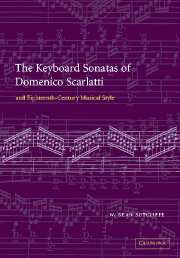5 - Irritations
Published online by Cambridge University Press: 22 September 2009
Summary
DER UNREINE SATZ
Introduction
What Scarlatti does for syntax he also does for the elements of musical grammar. If Scarlatti's radically relativistic approach to rhythm and syntax has remained under-appreciated, the same is less true of his harmonic and voice-leading peculiarities. This is not surprising given our greater attunement to these elements – we are trained from an early age to spell our music correctly, as it were, and to avoid poor grammatical relations between successive sounds. In these terms musical intelligence and literacy are defined largely by the resourceful avoidance of such infelicities. Yet even here, the extent of Scarlatti's estrangement from common practice – the manner in which the composer apparently goes out of his way to infringe the laws governing the continuation and combination of voices – is far from common knowledge. The composer's uncertain historical and stylistic position colludes with an uncertain grasp of his anomalous language to lend him a marginal place in musical pedagogy, a fundamental current function and means of dissemination for eighteenth-century music. It is thus doubly no accident that Scarlatti does not figure much in the teaching of musical rudiments, in the acquisition of harmonic and contrapuntal skills in tonal music. Teachers will have enough difficulty explaining to their charges the aberrations found in Bach, Handel and Haydn without opening the Pandora's box that Scarlatti's sonatas represent. Edward Dent imagined the likely response: ‘“If Domenico Scarlatti writes consecutive fifths, why shouldn't I do so too?”.’
- Type
- Chapter
- Information
- Publisher: Cambridge University PressPrint publication year: 2003

